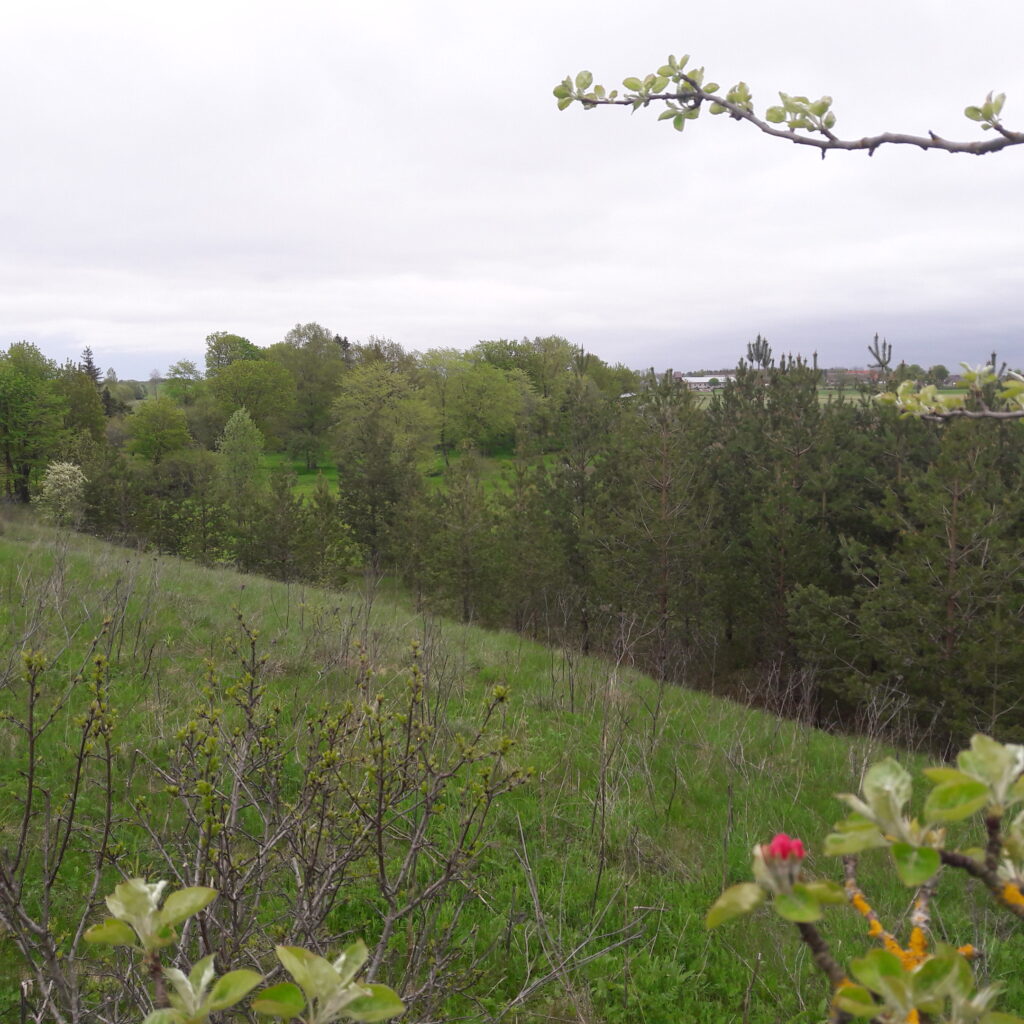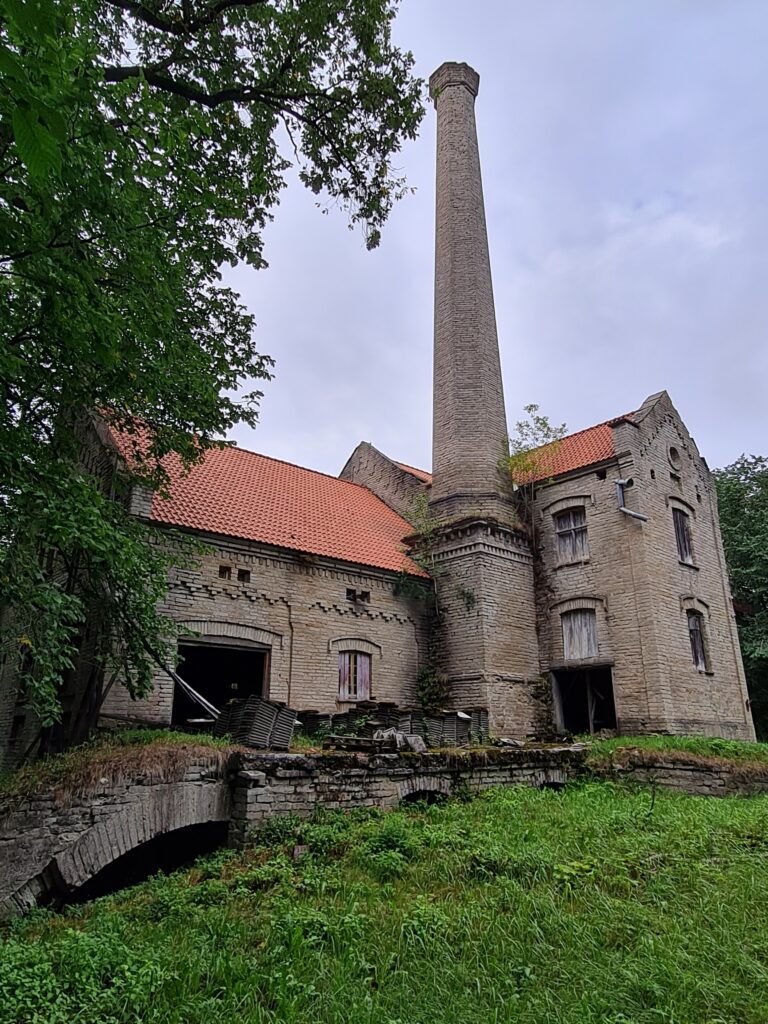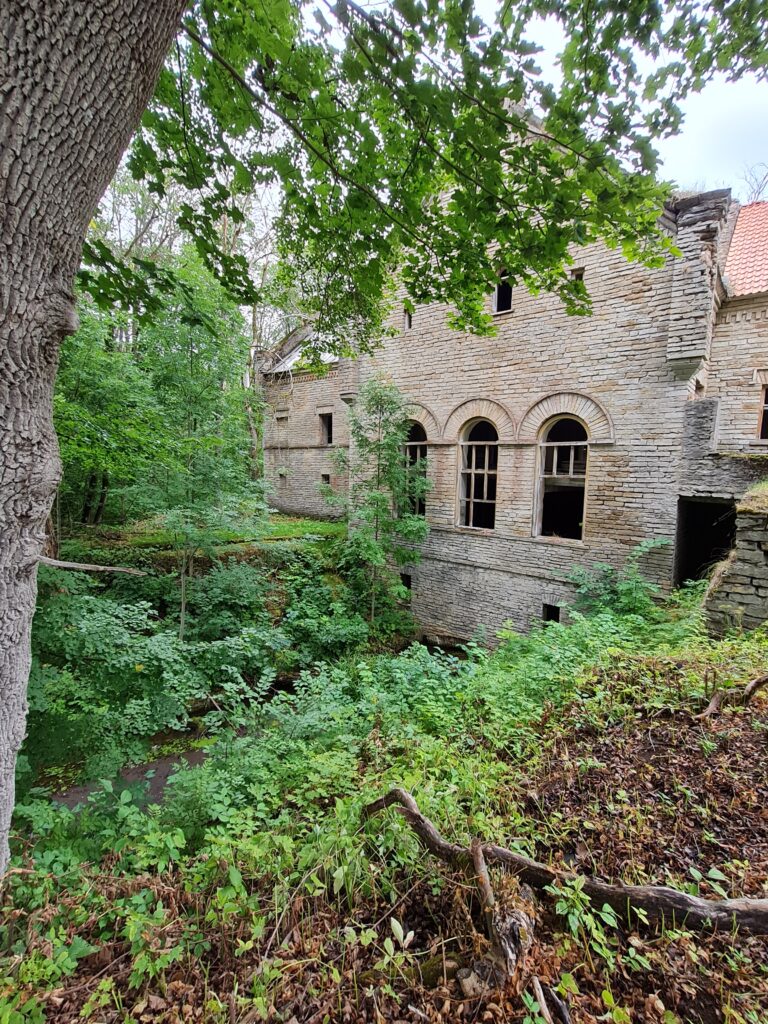Nearby scenic and historical sites and attractions:
Hiiemäe Puhkemaja is located near the city limits of Kunda, approximately 3 kilometers from seashore, in the valley next to the powerful ridge Kunda hiiemäe, which is protected as a natural heritage monument. In folk tales Kunda hiiemägi has been described as an ancient place where prayers and sacrifices used tot take place, but in modern times simman and dance fesitvals were held. The name of the company was created based on the location – hiiemäe.



Within walking distance is the best salmon river in Estonia (The river of Kunda).



Kunda manor is located a few hundred meters away and was once one of the most spectacular manor ensembles in Estonia. It was first mentioned in 1443. The representative heart of the late Baroque manor was built in the fourth quarter of the 18th century during the Schwengelmite. In 1840 the Girard de Soucantons were located in the manor. A separate and very picturesque complex is formed by the powerful buildings on the banks of the river under the klint fort, built in the 1870s and 1980s, with strogly articulated limestone walls and tutor décor (with a sharply projecting cornices, windows sills, etc.) buildings: a distillery, a mill and a dairy. A unique system limestone mill dams and canals preserved. The building is united by a lare free-design park. Today the manor ruins are a nest of winds (the main building of the manor has been in ruins since the Second World War) but for a careful observer these old and dignified walls can tell exciting stories form the past.
https://goo.gl/maps/aHcom1i5STJytRyAA



Kunda hüdroelektrijaam – rajati 1893. aastal Kunda jõe kärestikele tsemendivabriku varustamiseks elektrienergiaga ning on Baltimaade esimene hüdroelektrijaam 240-hobujõulise turbiiniga.
https://goo.gl/maps/2mhG66bcufTaLyG19



Kunda cement factory. The history of cement production dates back to 1870, when John Carl Girard de Soucanton, the owner of Kunda manor and Viktor Christoph Lieven a chemist, started producing cement. Limestone and blue clay deposited at the bottom of the ancient lake Kunda were used as raw materials.



Kunda Cement Museum – located in the office building of the former cement factory. In the museum it is possible to get acquainted with the history of the invention and introduction of cement, the cement production process and the history of the Kunda cement factory.



Kõrge ja kaunis Kunda Kronkskallas on ainuke Lääne-Virumaa kõrgeim pangaastang. Umbes 35m kõrguselt avaneb kaunis vaade Kunda lahele.
Ühe kohaliku lapse jutu järgi olevat ta nime saanud sellest, et kohalikud avastasid sealt pronksi ja selle fakti varjamiseks nimetasid selle paiga kronkskaldaks.
Jalgsi matkates jääb Kronkskallas puhkemajast 6km kaugusele, autoga sõites 8km.
https://goo.gl/maps/jDBG6J9bLYTG3tK59



Malla manor – the first written information about the manor dates back to 1443. In the Middle Ages, Malla manor was build as a vassal castle. During the Estonian SSR the manor belonged to the ocean in the production group of the Estonian fishing industry. The manor gained attention in 2014, when the Finn Risto Pietilä vought it for bitcoins. The main building burned down on September 7 2018.
There was a wooden warehouse at the foot of Kukerpallimäe in Kunda for a long time. The viewing platform is possible relax, have a picnic and enjoy the beautiful view.


Lontova – one of the oldest districts of Kunda is associated with the birth history of Kunda Harbor. In 1805, Emperor Alexander I signed a permit to build a port in Kunda. Schnackenburg, a German businessman in St.Petersburg, the capital of the Russian Empire at the time, later had the idea to establish a resort on the Kunda beach for the capital’s wealthy residents, build a hotel for guests and a customs office, build another sawmill on the Kunda River and a harbor pier near the mouth. All of this was called Neu London – New London, which the locals liked – London. The activities of the Kunda cargo port ended in 1940. The port was reopened as part of AS Kunda Nordic Tsement, and today the port of Kunda is developing into an increasingly significant sea gateway in Estonia every year. In late winter, when the snow has already melted, the bitter-spicy smell in the Lontova forest betrays the beginning of spring. The bear’s head has stuck its nose out of the moss. This spicy-tasting plant came to London with the Vikings, who made sure that they were not hit by vitamin deficiency on the beaches near Kunda in the spring.
Letipea cape and fishing village – moving from the port to the east-northeast of London, we reach Letipea Cape and fishing village, which is famous for its large boulders. Right at the beginning of the village, the Tagaküla Suurkivi, with a circumference of almost 30 and a depth of 4 m, stands out. On the very shore of the shore stands the protected Ehalkivi, which is the largest rock noise in Northern Europe (volume 930 m3).
Lammasmägi – is one of the oldest human settlements in Estonia. The settlement was found in 1886. The findings suggest that the settlement of the Middle Stone Age hunters and fishermen lived from 8700 to 4950 BC. When similarly shaped intelligence tools were later found elsewhere, it became known as the Kunda culture because of its richest location in Mesolithic culture. About 3,800 objects have been found on the island of the lake.



Viru-Nigula Local History Museum is located in a former pastorate built in the 13th century. In 1658, the Russian Tsar Alexei looted and burned the entire church manor and church. The church manor was restored by four surrounding manors. The new house became spacious but eclectic. The basement and a powerful mantle chimney have remained unchanged. In later (Soviet) times, the building has been used as a hospital and school boarding school. The museum has exhibits from different eras. These include reviews and photos of the life of Otto Wilhelm Masing. Exhibitions about deportations and collective farms, old tools, consumables and temporary exhibitions. https://goo.gl/maps/nNfUqvZiyPgBt7f4A






Vasta manor was first mentioned in 1398, when Berthold Meckes von Waschel owned the manor. The manor house of the manor was probably built around 1770 during the time of Carl Ludwig von Ritter. Along the road leading to the heart of the manor is the ruler’s house, where in 1833 Friedrich Reinhold Kreutzwald, the creator of the national epic “Kalevipoeg”, had his wedding party with the German Marie Elisabeth Saedler. A school has been operating in the main building of Vasta Manor since 1940, now Vasta school. The manor can be viewed from the outside every day, but in the summer you can visit the main building as part of the Forgotten Manors manor game.





Ruins of St. Mary’s Chapel – are located in Viru-Nigula and the ruins of St. Mary’s Chapel or War Mary Church were built in the 13th century. It is believed that the chapel was built to celebrate the victory over the Russians in the 1268 battle between the Livonian Order and the Russians. After the Lutheran Reformation, the chapel remained unmaintained and became a center of popular superstition, causing partial demolition and subsequent demolition in the middle of the 17th century. Today, the end file of the former chapel has been preserved. The chapel is rare because it differs from the buildings erected at the same time in terms of the type of construction from the east and is known to be the oldest stone sacral building in Virumaa.
